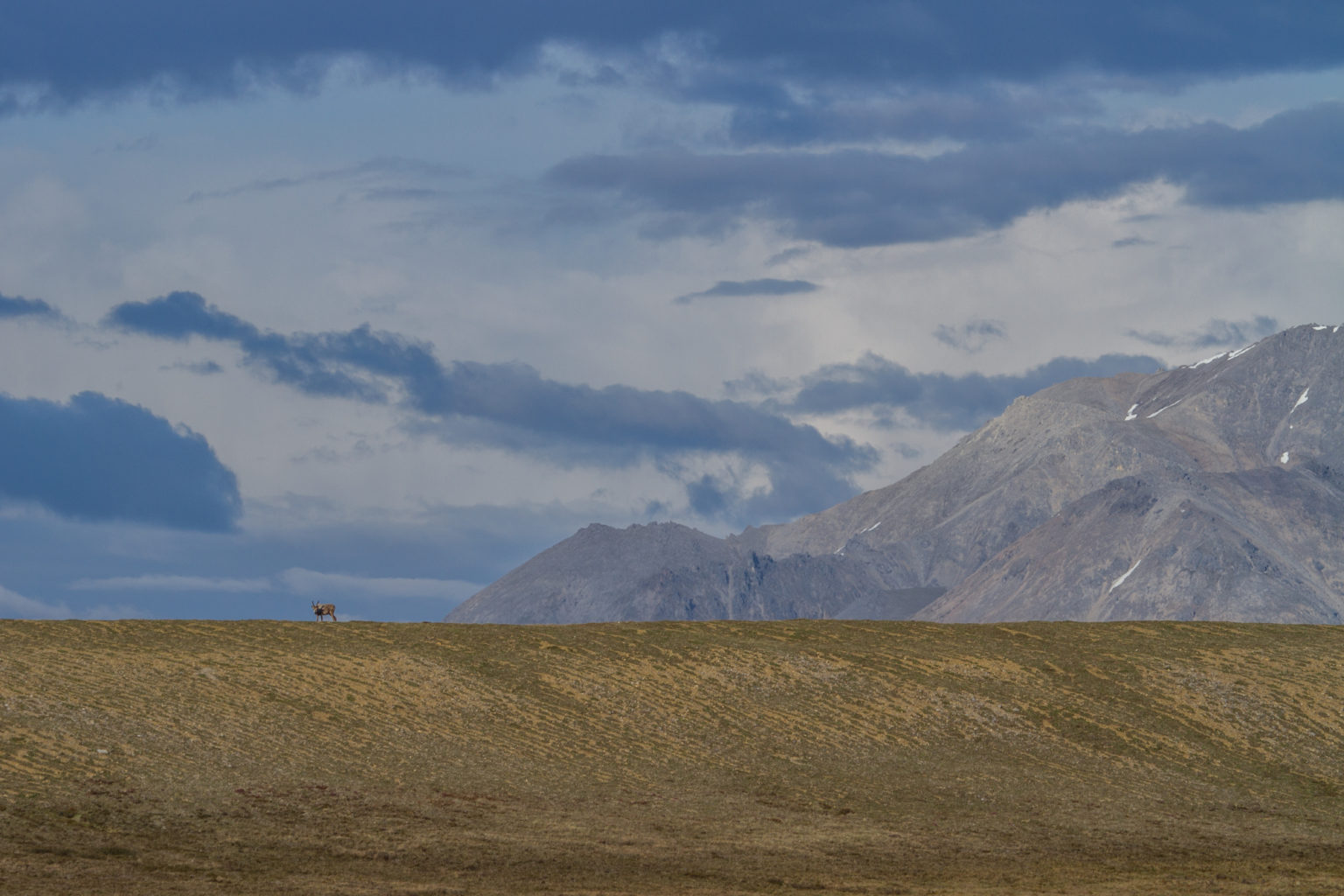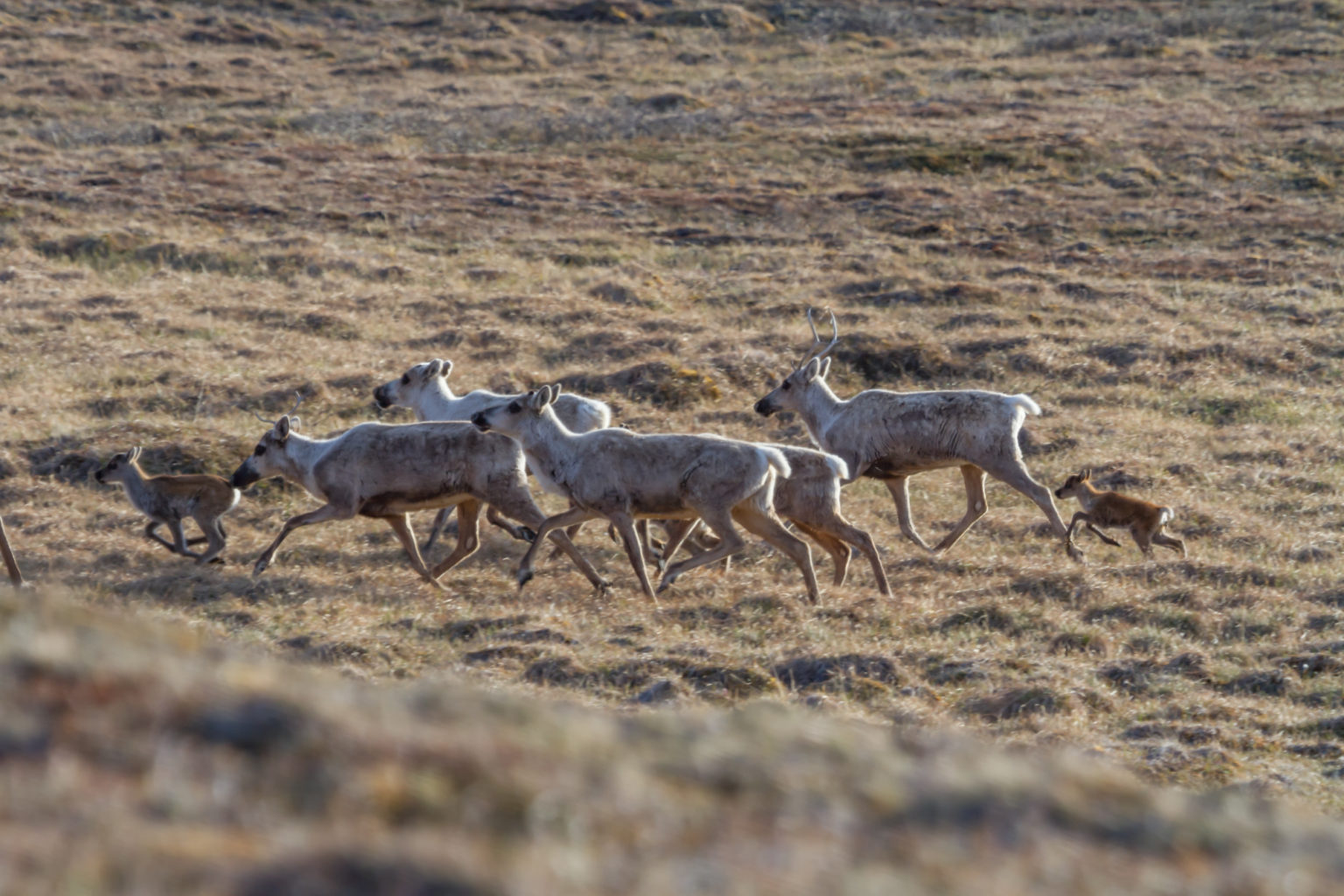In Northern Alaska, A Human Rights Imperative

Trump’s assault on climate and public lands has put vulnerable communities at risk. Under his leadership, millions of acres of public lands have been opened to the energy industry and crucial protections have been rolled back on Indigenous lands.
Included in the list of areas under threat is the Arctic National Wildlife Refuge. The Arctic Refuge lost crucial protections at the start of the Trump administration when the refuge’s coastal plain was opened to the energy industry for oil and gas leasing. The move marks the first time a national wildlife refuge in the U.S. has been opened and re-purposed for oil development, setting a dangerous precedent for America’s National Wildlife Refuge System.

This summer I traveled to Arctic Village, a small native village in northeastern Alaska on the Southern border of the Arctic Refuge, to listen and learn from the Gwich’in people — the First Peoples of the area who rely on the land for cultural traditions, for subsistence, and for their chief source of food: the Porcupine caribou. The caribou, which make up as much as 80% of the Gwich’in food supply, migrate between Canada and Alaska south of the Brooks Range to birth their calves on the coastal plain. In the process, these animals engage in the longest land migration route of any land mammal on earth. If the administration moves forward to develop the coastal plain for oil the Gwich’in will lose their main source of food.
“The struggle is as much one for biodiversity as it is for Indigenous and human rights,” said Brennan Lagasse in Yes! Magazine, a writer, skier and sustainability professor. “As First Peoples of the area, the Gwich’in have a history of oppression much like Indigenous people across the planet. They have a deep connection to the land, and especially the Porcupine caribou.”

Developing the coastal plain for oil will also impact climate change. While it’s estimated that the oil reserves would only last six months, based on the current rate at which oil is being used, the climate impacts would be devastating. Research shows that if all the oil beneath the Arctic Refuge is extracted and burned it would add climate emissions to our atmosphere equivalent to emissions from 898 coal plants operating for a full year or adding 776 million passenger vehicles to the road.
When I flew into Fairbanks on June 19, record-high temperatures were feeding wildfires across the state — about a quarter-million acres burned and nearly 120 fires were unconfined. After arriving in Fairbanks, I flew to Arctic Village with a group of activists and educators. While the smoke from the wildfires had not yet reached the refuge, looking out through the haze there was a sense that the landscape is changing. The hot, dry climate sweeping fires across the west is causing Arctic permafrost to melt and is drying up lakes and rivers that the Gwich’in rely on for subsistence.
“The planet is trying to tell us something and we ought to listen,” said Charlie Marion, a Gwich’in leader and community provider in Arctic Village.
As lakes and rivers dry up it becomes harder to fish and hunt for their communities, he told us.
“This past winter when Loon Lake froze there was not enough oxygen in the ice to sustain the fish as a result of the low lake levels,” he said. “This spring, the fish washed up dead on the shoreline.”

The east fork of the Chandalar, a passageway for community providers who canoe up river to hunt in the fall, has also reached record lows.
“If the water is too low and I’m not able to travel up river this fall it will be the sixth year I haven’t been able to get a moose,” said Marion.
In the Arctic Refuge — a roadless area that can only be reached by plane — successfully hunting a 1,300-lb. moose in the fall ensures that one family has enough meat for an entire winter.
“To pay for that much meat would cost around $4,000 between the cost of fuel and the cost of meat,” he said.
Fortunately, under the leadership of Sarah James, a Gwich’in leader and lifelong advocate for the Arctic Refuge, and members from the Gwich’in Steering Committee, efforts to protect the refuge are increasing across the country.
Since the environmental review process began the Bureau of Land Management has received more than one million public comments in opposition of the development. And as more people become aware of the issue, this number increases.
“I think it’s important that our supporters are part of our message and understand us because we have to live in this world together,” said James.
For James, keeping the energy industry out of the Arctic Refuge is about protecting her people, protecting the caribou, and protecting the global communities being impacted by climate change.
“The more we work together, we’ll have a better place to live in this world,” she said.

In the coming weeks, the U.S. House of Representatives will vote on H.R. 1146 — the “Arctic Cultural and Coastal Plain Protection Act” — which would stop the administration’s push to lease the Arctic Refuge coastal plain to oil and gas companies. More than 180 members of the House have cosponsored the bill, and I urge the rest to do the same.
About the author:
Rebekah Ashley is based out of Salt Lake City and has been advocating for the protection of the Arctic National Wildlife Refuge as an activist and journalist since 2016 . In June 2019 she traveled to Arctic Village to hear from other voices on the issue of Arctic Refuge protection.
